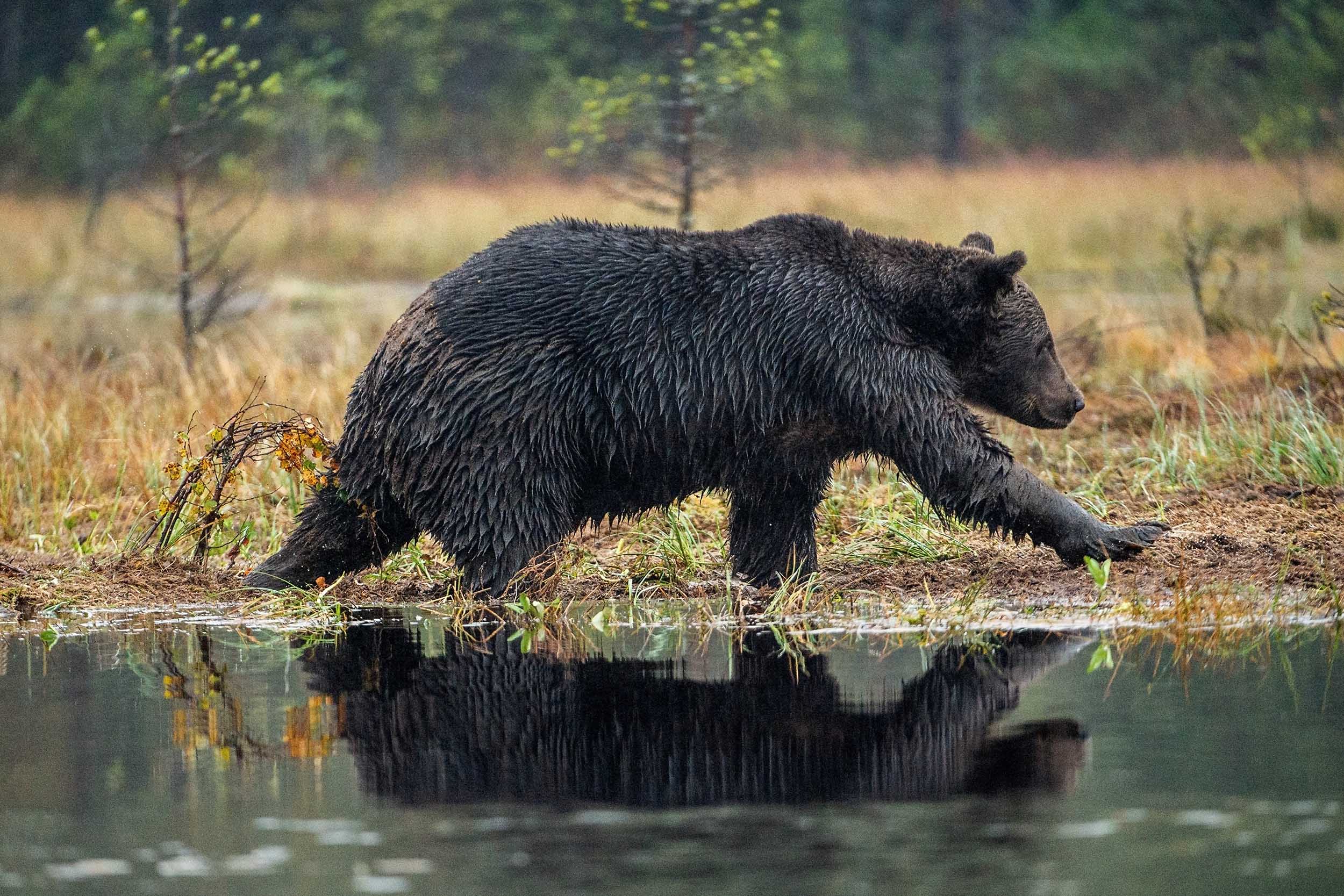Sections of the heavily trafficked Buttermilk Trail near the town of West Yellowstone, Mont., remain closed as wildlife officials continue capture efforts for a grizzly bear believed to be responsible for a woman’s death.
According to a press release issued by Montana Fish, Wildlife & Parks (MFWP), game wardens became aware of the woman’s body early Saturday morning. A team composed of MFWP officials, bear experts, and representatives from other agencies responded to the scene, where they confirmed the woman had suffered injuries consistent with a bear attack.
“They also found tracks from an adult grizzly bear and at least one cub near the site. They did not see any bears or signs of a day bed or animal carcass during the investigation,” a MFWP representative said in the press release.
“The hiker was believed to be alone during the encounter, and no bear spray or firearms were found at the scene,” the release continued.
The Custer Gallatin National Forest issued an emergency closure of the area, a region that includes the section of the Buttermilk Trail where the attack occurred, as well as 4 miles of the Continental Divide Trail. The Buttermilk Trail is not within the boundaries of nearby Yellowstone National Park.
The closure will remain active through August 25.

“Grizzly bear populations have increased in Montana over the past few decades. So grizzly bears are expanding into areas where they haven’t been in a long time,” Morgan Jacobsen, the information and education program director for the Bozeman region of MFWP told GearJunkie when reached for comment. “That being said, the [area where the woman’s body was found] is well within occupied grizzly bear territory and has been for a long time.”
Ongoing Capture Efforts
Capture efforts for the bear have been ongoing since Saturday night and will continue over the coming days. The capture tactics included searching for the bear from aircraft during the day and setting traps in the area at night.
“How long we’ll [continue capture operations] is kind of a balance,” Jacobsen said. “The greater the time that’s elapsed, the greater chance we’ll catch a bear that isn’t involved in this incident.”
According to Jacobsen, the decision as to the bear’s fate should it be captured is still up in the air.
“If we’re able to capture the bear and confirm it was the bear that was involved in the incident, then euthanizing [it] is an alternative that may be considered. If we’re not able to come to that conclusion decisively and positively link it to the incident, it may be relocated. We’ll assess and make that determination if and when we capture the bear,” Jacobsen said.
Because of the grizzly bear’s status as a threatened species, the decision to relocate or euthanize the animal will be made between MFWP and the U.S. Fish and Wildlife Service.








